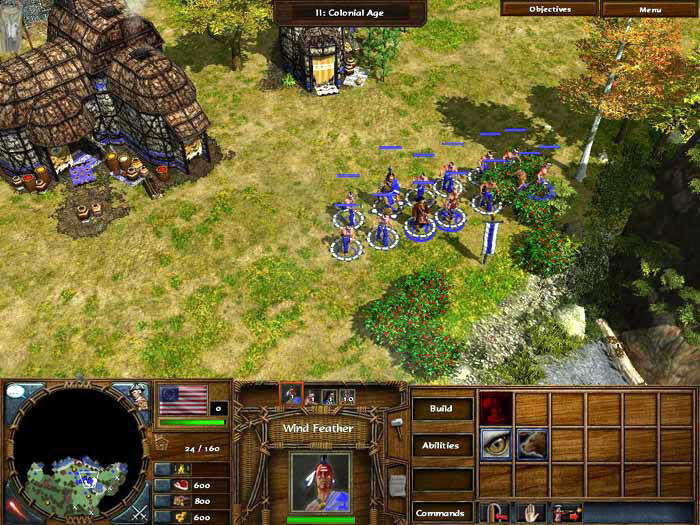
From Age of Empires Expansion: The Rise of Rome is the highly anticipated add-on to the award-winning strategy game Age of Empires, of. Focusing on the legendary Roman Empire, The Rise of Rome will challenge veterans and novices alike to wage war on an epic scale with four additional civilizations, several unique units, new technologies, and new campaigns, including the showcase campaign that focuses on The Rise of Rome. Multiplayer play is possible on, via TCP/IP, or via serial ports. In a multiplayer game, all players must use the same version; for example, if you are using the Age of Empires Expansion trial version, only trial version games appear in the multiplayer list.
Age of Empires III The Asian Dynasties is one of those games that keep you hooked to the computer for hours and hours. For sure that you have ever heard of Age of Empires and this time they have released a really exciting game. The Asian Dynasties is the next step in strategy game.
Age of Empires II has been re-imagined in high definition with new features, trading cards, improved AI, workshop support, multiplayer, Steamworks integration and more! Download Age of Empires III Asian Dynasties. Explore, conquer and extend your Asian empire. Age of Empires III The Asian Dynasties is one of those games that keep you.
If you enjoyed Age of Empires III, you'll love this expansion. Now you'll be able to take the control of one of the three Asian dynasties: Japanese, Chinese or Indian and experience something different: new characters, new weapons, new wonders, new maps and even a new game mode. You'll have to construct new wonders to go to the next age, so you'll be able to appreciate The Indian Charminar Gate, The Chinese Confucian Academy, The Japanese Torii Gates, The Japanese Great Buddha, The Chinese Porcelain Tower.
Age of Empires III: The Asian Dynasties adds three new civilizations, 15 monumental Asian Wonders, the new Export resource, new random maps, three five scenario-campaigns that feature all new Age of Empires III characters, Eastern native tribes, and a wealth of exciting new Home City content. Lead the Chinese army, Japanese army or Indian army. Explore, battle, manage sources with only one goal: have the world at your knees. You'll be surprised with the graphics and the detail level of Age of Empires II Asian dynasties. The movements of the people, the game mode that will trap you: easy to play but difficult to master, you'll learn how to manage your civilization step by step.
If you like strategy games, the latest Age of Empires is a must have.
Ensemble Studios has done a good job in making each civilization look different as well as act different. Basic structures for all empires are identical in the Stone Age, where most games begin, but at each successive Age (Tool, Bronze, Iron) the buildings take on unique aspects. By the time players are well into the game, each side looks different enough that the fiction of controlling distinct civilizations is maintained. Other visual touches are spot-on as well. The gradual deforestation of the land is marked by tree stumps littering the plains, while beasts slain by hunters gradually decay into bleached skeletons to dot the landscape. There are several types of trees (with differing values as sources of lumber), four types of animals (not including the birds that soar overhead), fish, and whales which can be harvested, along with gold and stone. The world map, though smallish by imperial standards, is nicely contoured, with hills, cliffs, and beaches.
Elevation matters in combat, and units move faster going downhill than uphill. The overall look of the game is thus very detailed, and very satisfying. A full-featured editor is included, so custom scenarios should be ubiquitous with time. This campaign map is a nice touch, but it’s more about a pretty picture than tactical awareness.

While the mechanics of Age of Empires are simple, the underlying structure is a bit more complex. In a random game, the most common sort of contest for the solo gamer, each civilization begins with three villagers (the only units which can actually build) and a town center.
Each center supports up to four units, and each house built thereafter supports an additional four units, up to the maximum of 50 units a side (more or less). Install Prtg On Ubuntu. Each villager costs a certain amount of food, while combat units cost various combinations of food, wood, or gold. Every civilization can build the basics, but advanced structures depend on the culture’s specific technology tree, and some cultures get bonuses unique to them. Where Age of Empires shines is in the diversity and detail of its units. Depending on the allowed technologies, a civilization might develop multiple variations of siege engines, archers, infantry and cavalry units. As each civilization has different abilities, and no two are precisely alike, this assures that combat between players will likely also be combat between opposing tactical systems. Some units, like priests, offer capabilities that, if not unique, are unusual and extraordinarily well thought out.
Priests can convert enemy units, breaking up attacks and providing free augmentation to the recruiter’s intake (and unlike new construction, these conversions can occur regardless of how much housing a player has). The game isn’t flawless, by any means. Players expecting a serious historical sim will be disappointed.
It’s really tactical combat mated with a strategic resource engine, not a true “strategy” game by the strictest wargamer’s definition. Nonetheless, Ensemble and Microsoft have delivered quite a masterpiece, a game no one should scratch off their list without a good, close look. System Requirements: 90 Mhz CPU, 16 MB RAM, Windows 95/NT 4.0.